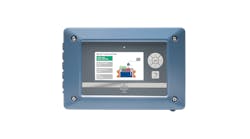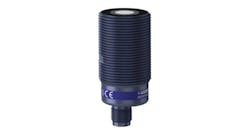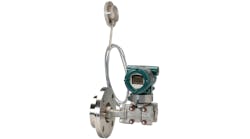The level of hazardous waste in the tank was increasing steadily, but the truck to haul it away for processing wasn’t expected until after the long weekend. With demand for saleable product high, no one was inclined to cut production—but it might be necessary to avoid overfilling the tank. Cleaning up a spill in the tank dike would be a huge mess. But what was the level really? Could it be higher or lower than the differential pressure (DP) transmitters indicated? A few percent of useable ullage might be all they needed to make it to Monday without a drastic rate cut.
As discussed by Ian Verhappen (Nov. 2017), a DP level measurement is “weighing” the material in the tank. And translating this to an accurate level in feet or meters requires an assumed or measured density—the density of the liquid at the temperature and pressure conditions in the tank. If you’re fortunate enough to have a spare nozzle in the tank at a strategic level and high-accuracy/high-stability pressure sensors, you can measure the density in the tank and correct the overall DP to determine the level with greater precision. But what if nozzles are prone to plugging, or the material in the tank is stratified? What if no one wants to let you weld a new nozzle on the old tank, or it’s rare and complicated to clear it for hot work? What if the tank is in a containment area that would immediately cause a fatal exposure to radiation, and no human can enter it for decades?
The Savannah River Site is a 300-square-mile Department of Energy (DOE) facility whose mission has transformed from manufacturing fissile material for nuclear weapons (1950s-1990s) to remediation and disposal of the residue from the past century’s activities. During the cold war’s nuclear arms race, scientists weren’t sure of the best way to dispose of the waste they produced, so they constructed a large underground tank farm to store it—around 36 million gallons remain—while they devised acceptable methods for processing the waste for safe and environmentally friendly disposal. This effort is ongoing, and the annual (federal) budget for the site is in the hundreds of millions of dollars.
The controls engineers from the site frequently have useful insights to share at conferences like the Emerson Global User Exchange, and I think the rest of us are fortunate that the site seems to be consistently supportive of their participation in such forums. This past fall, Principle Engineer Jim Coleman had some tricks to share on the subject of virtual sensors.
The interrelation of measurements is in play everywhere. When the “low fuel” light comes on in my car, I look at how many miles I’ve driven since filling up. Or if I exceed 400 miles without seeing the warning, is something else going on? Our process specialists and operators are engaged in this on a routine basis, verifying that related measurements validate one another. One of Jim Coleman’s strategies was to use such interrelation to provide continuous validation for an especially crucial measurement.
Just like the mileage driven in my car is the integral—the continuous sum—of my speed, so is the level in a tank the integral of flow. Conversely, flow is the derivative of level, and this is the relationship that Jim used to provide a second “flow measurement.” Computing derivatives of live measurements can be challenging due to the normal measurement noise—just circulating through an exchanger can impose a constant sinusoid (oscillation) in a tank level. But Jim took care to perform averaging and filtering to get the cleanest derivative (delta level per unit of time) and hence “flow.” This technique works provided all the routes of filling and emptying the tank are accounted for. Or, you may need to pause such an algorithm between batches or during tank swings. So, while Jim says it ain’t rocket science, there is still tuning, technique and nuance to craft such a virtual sensor.
The opportunity to use such relationships abound in our process plants. Why not derive some of these “free” virtual sensors to help your crews make the most of a long weekend?




